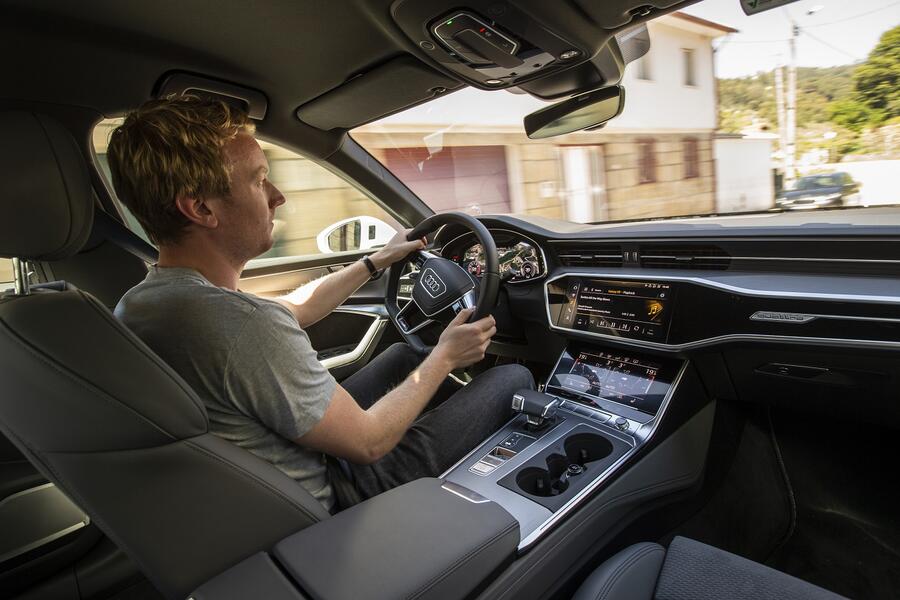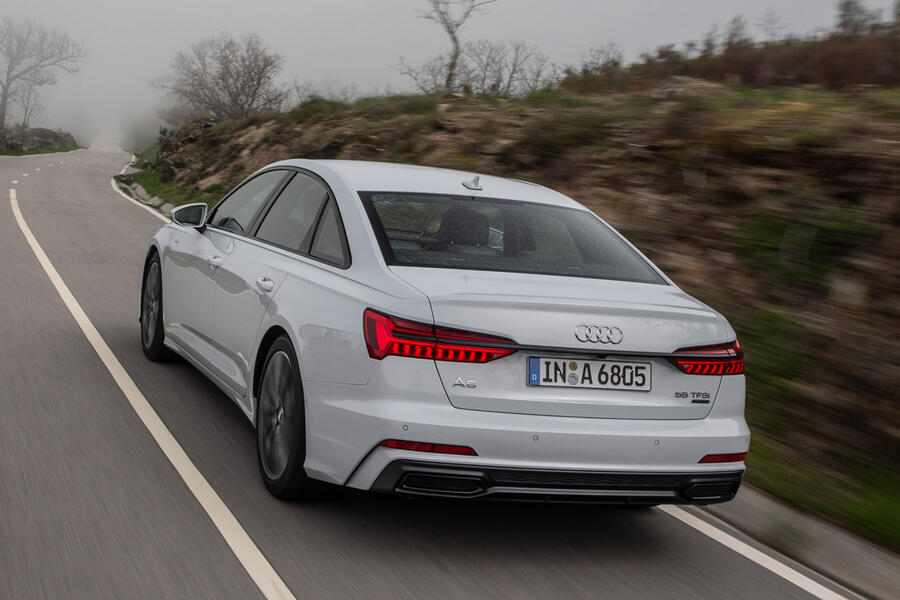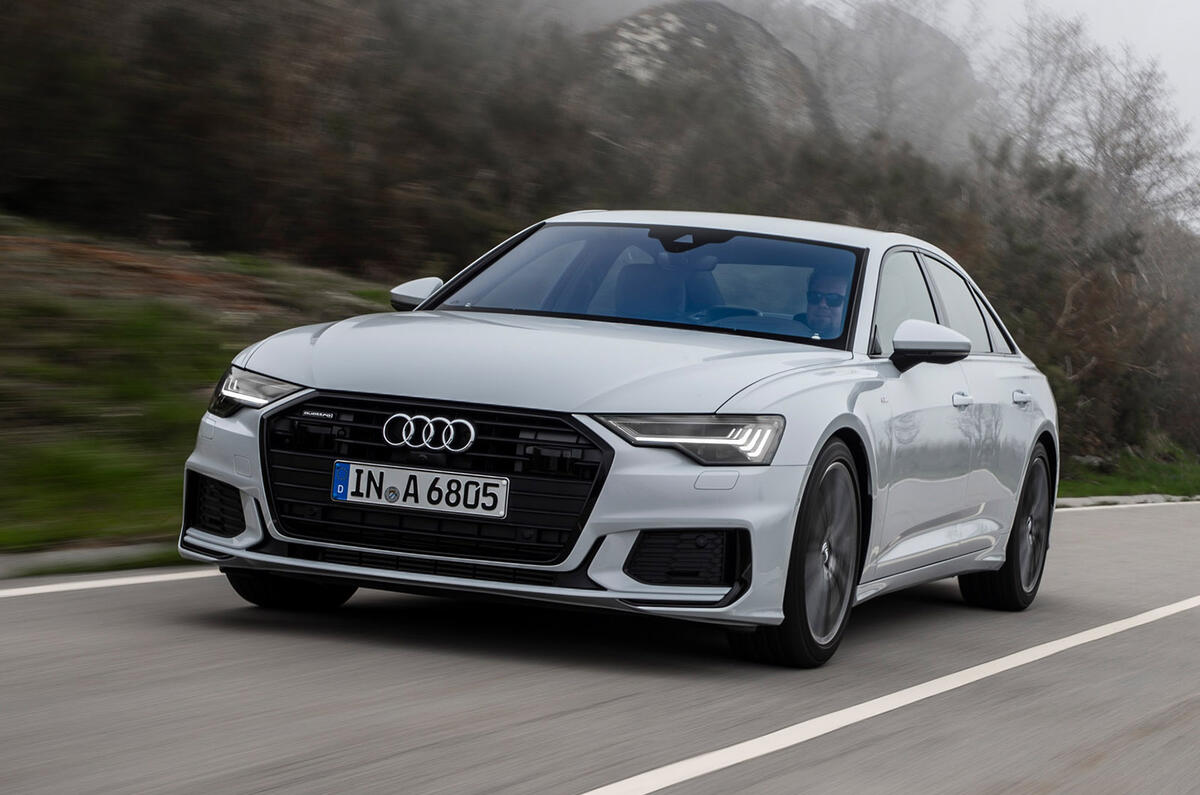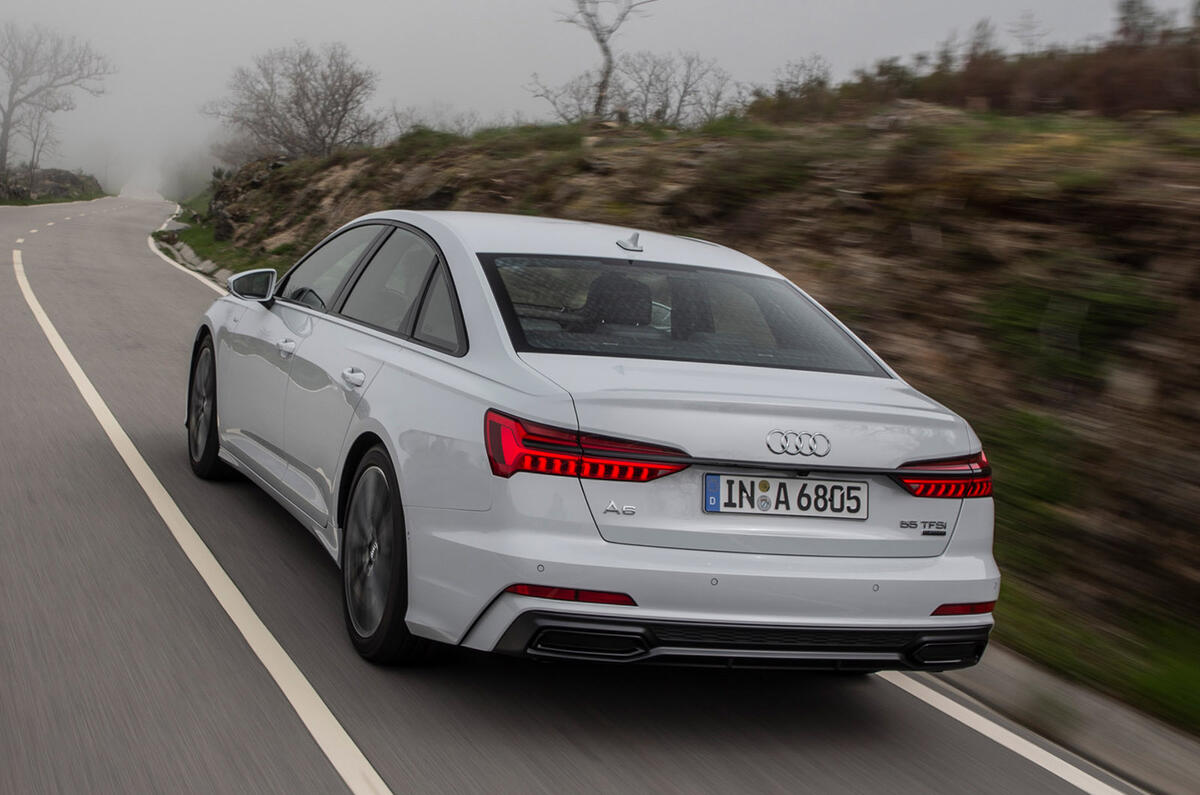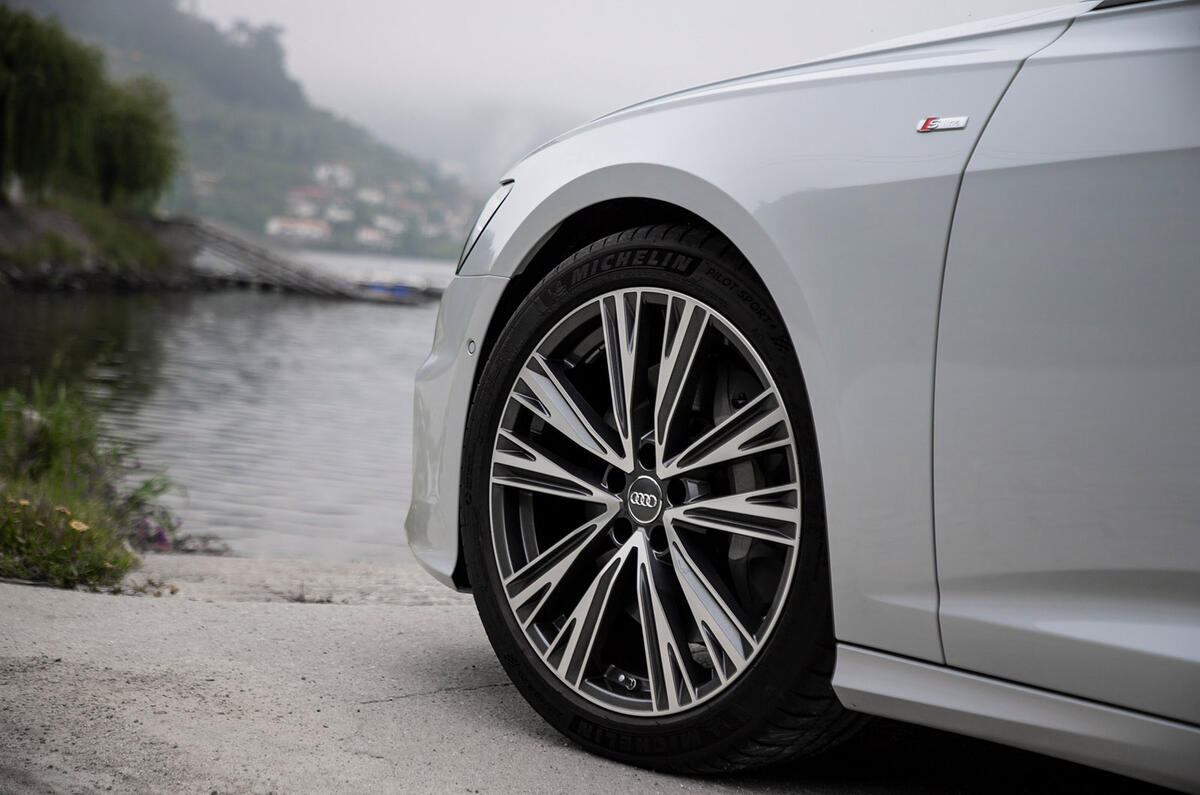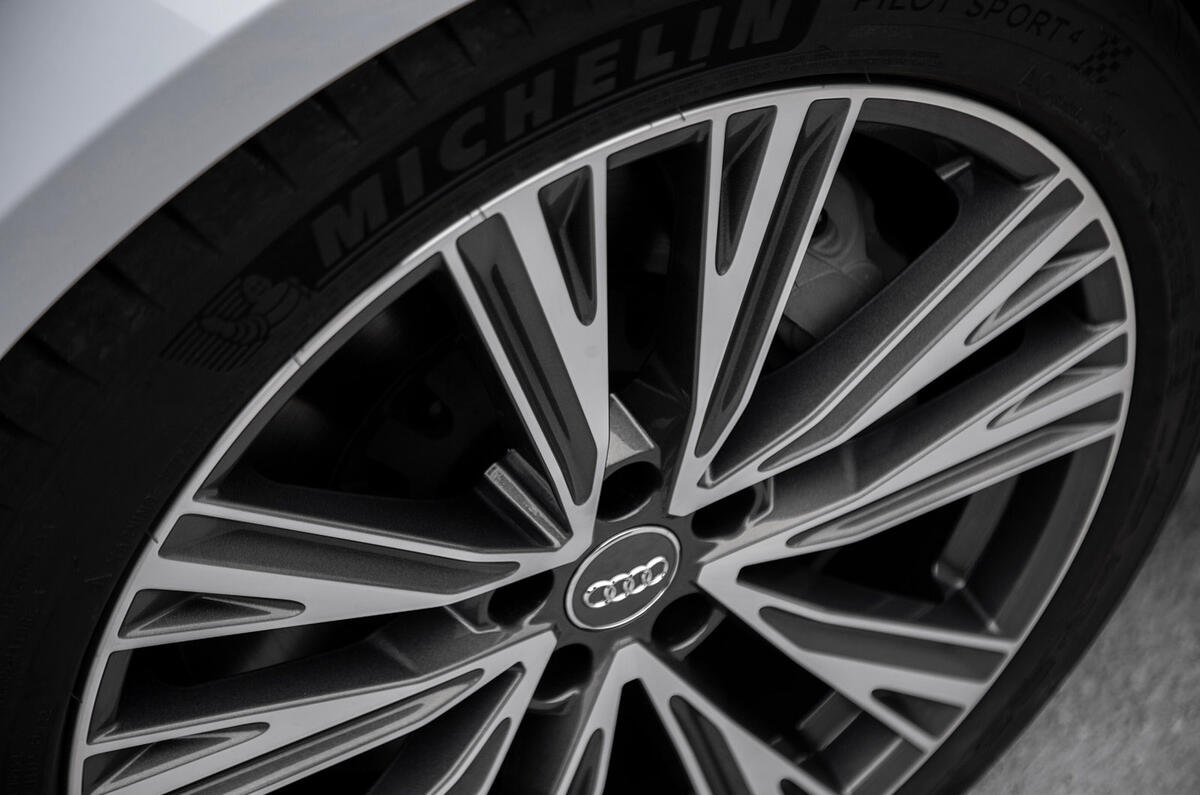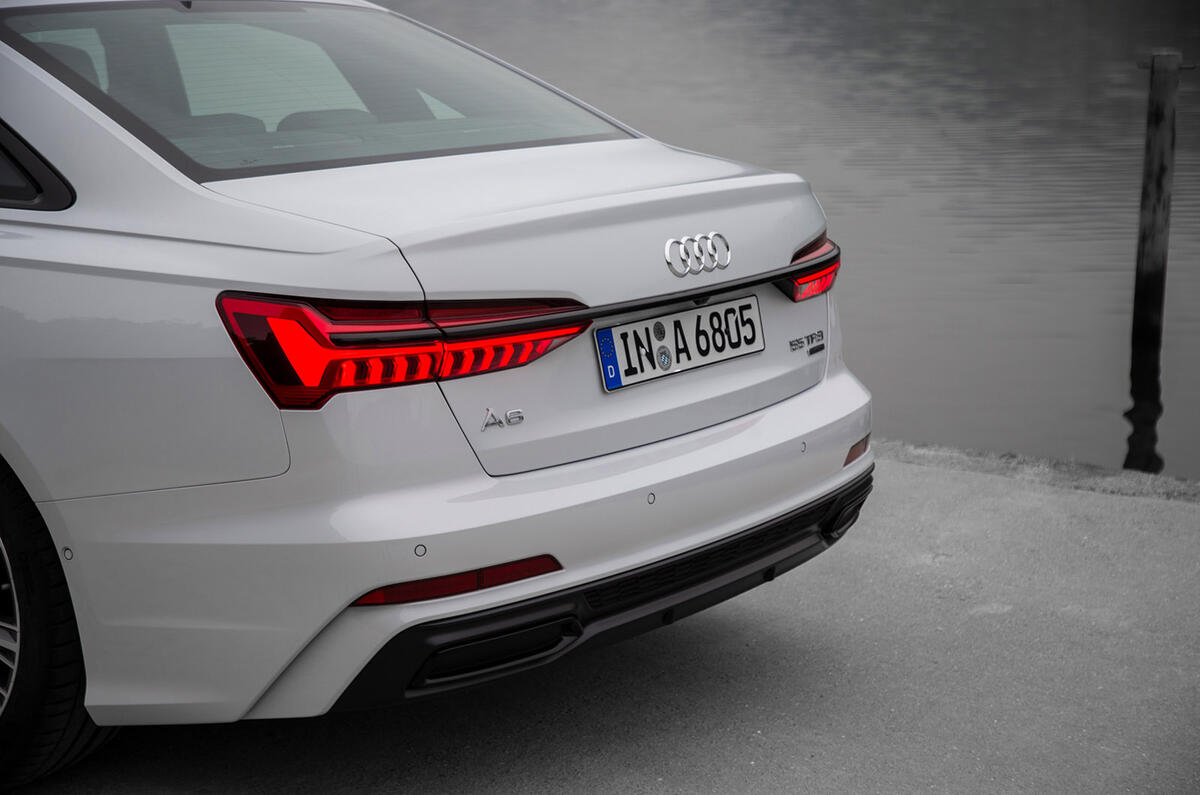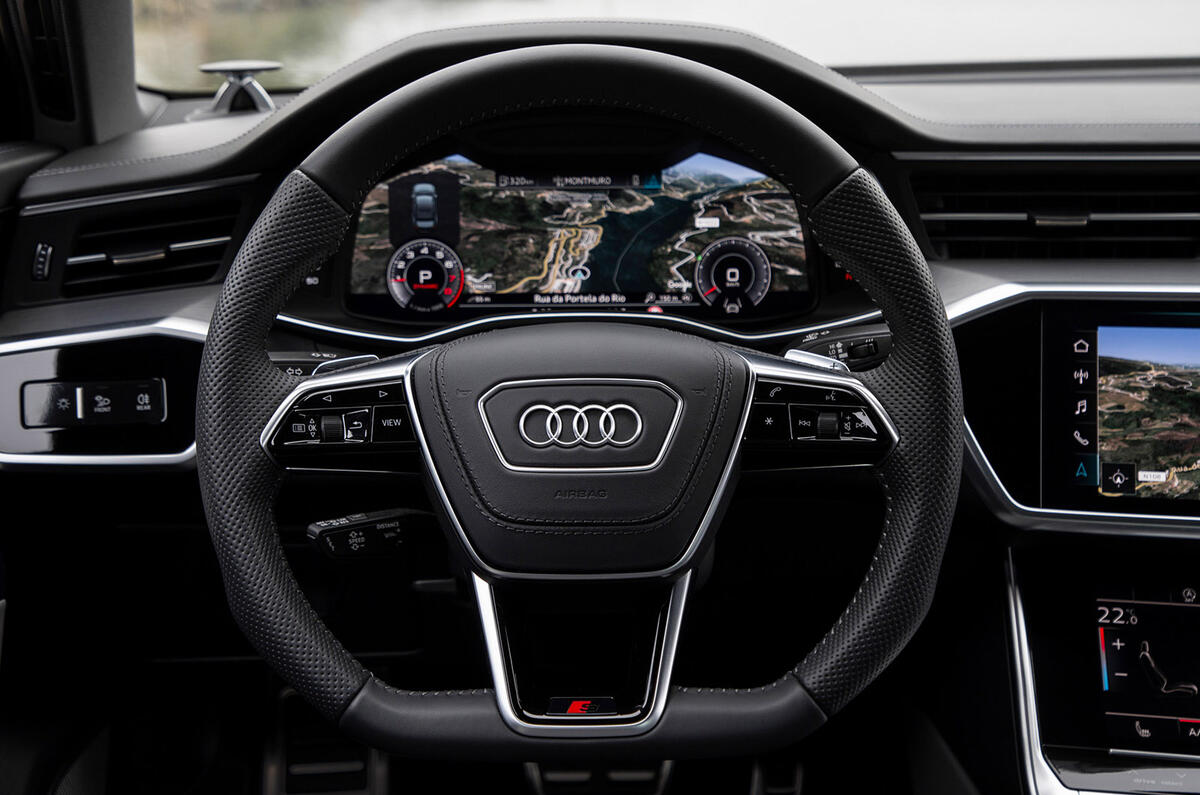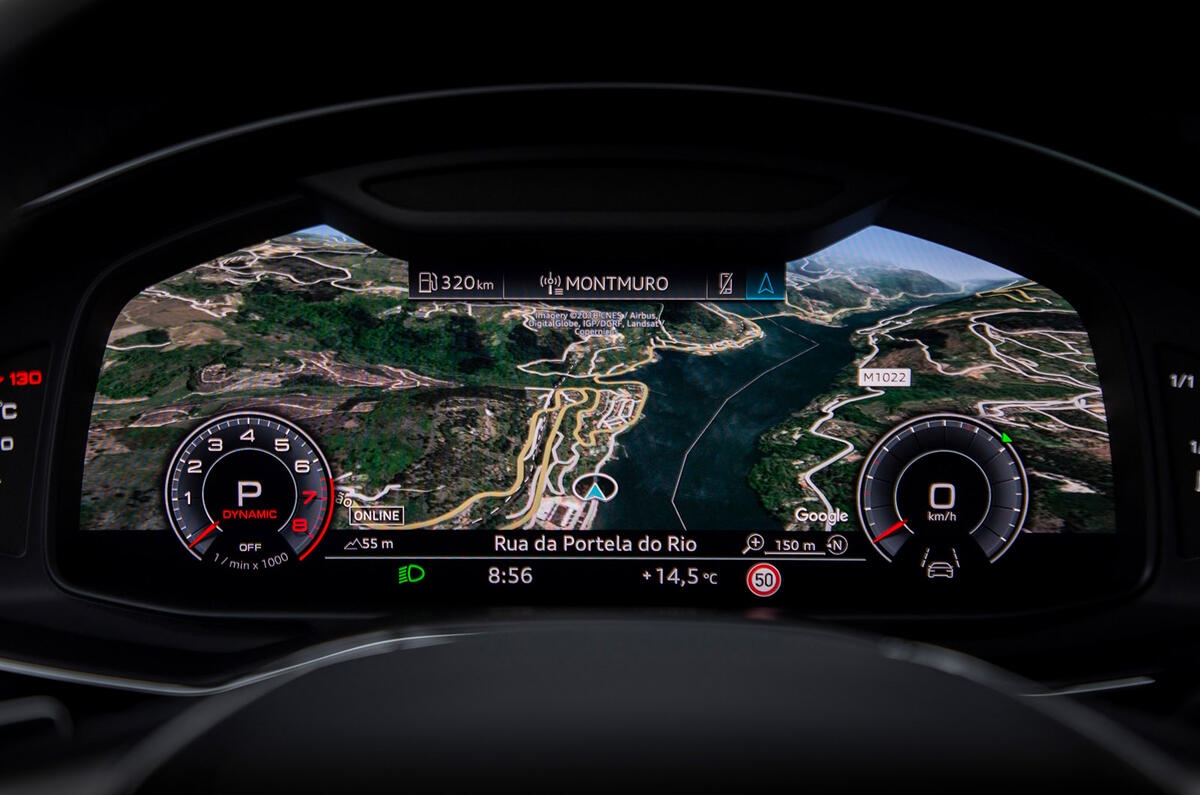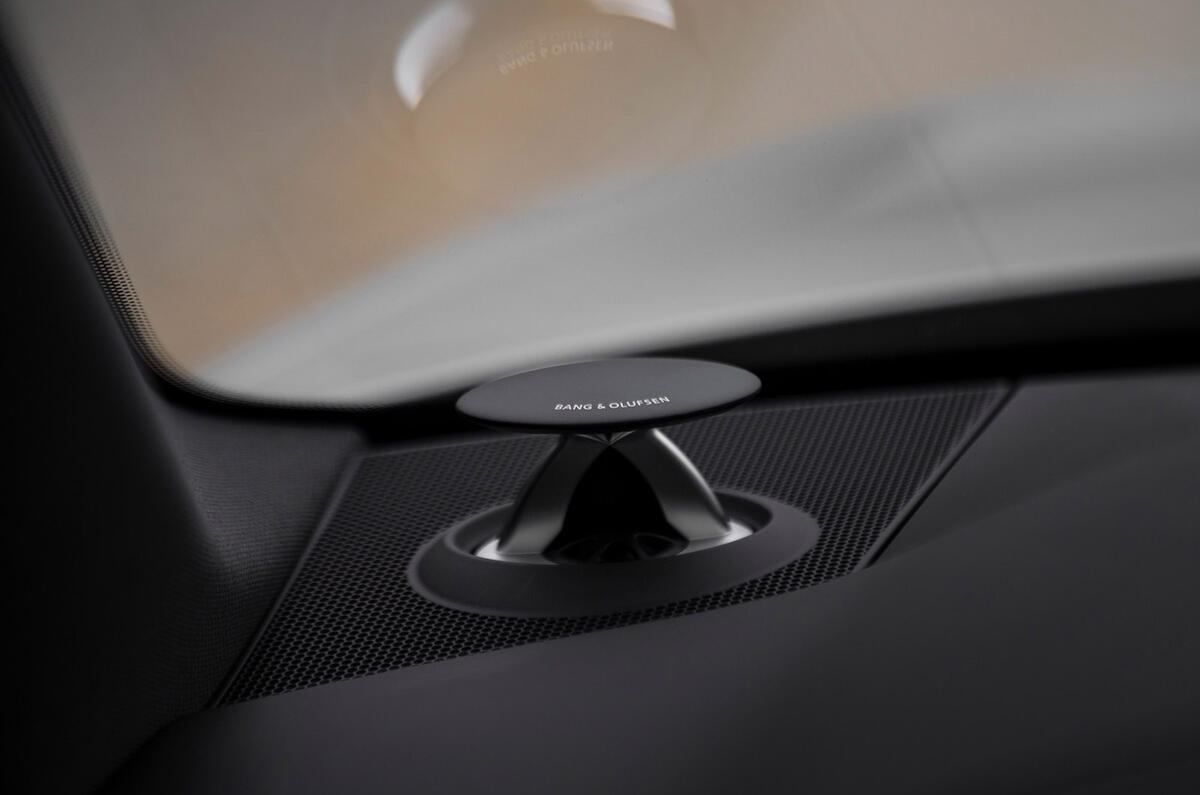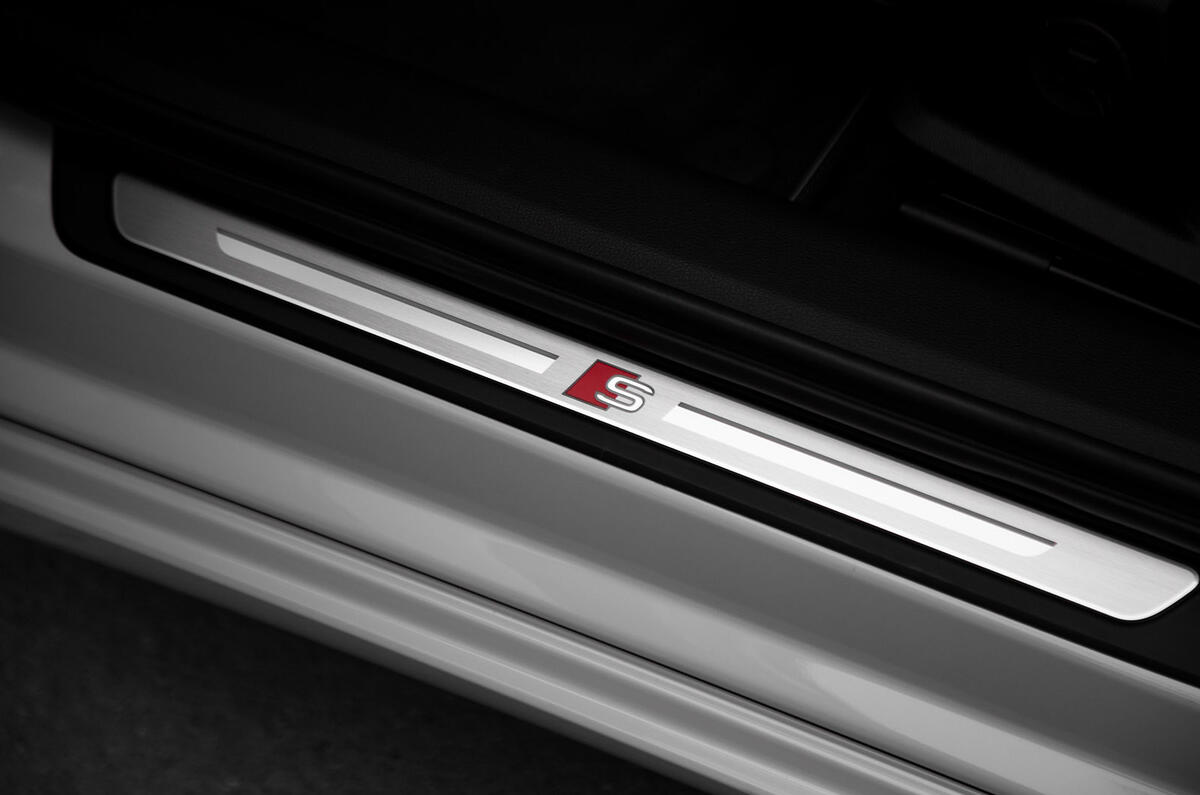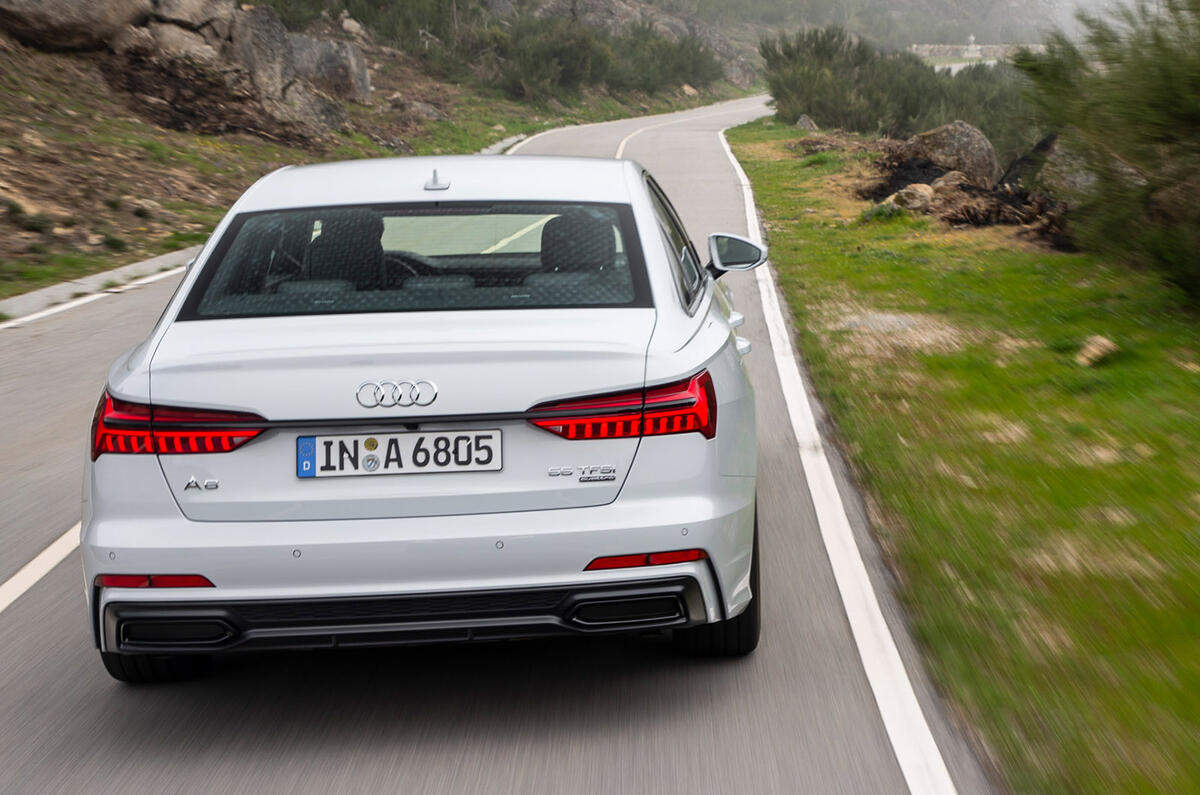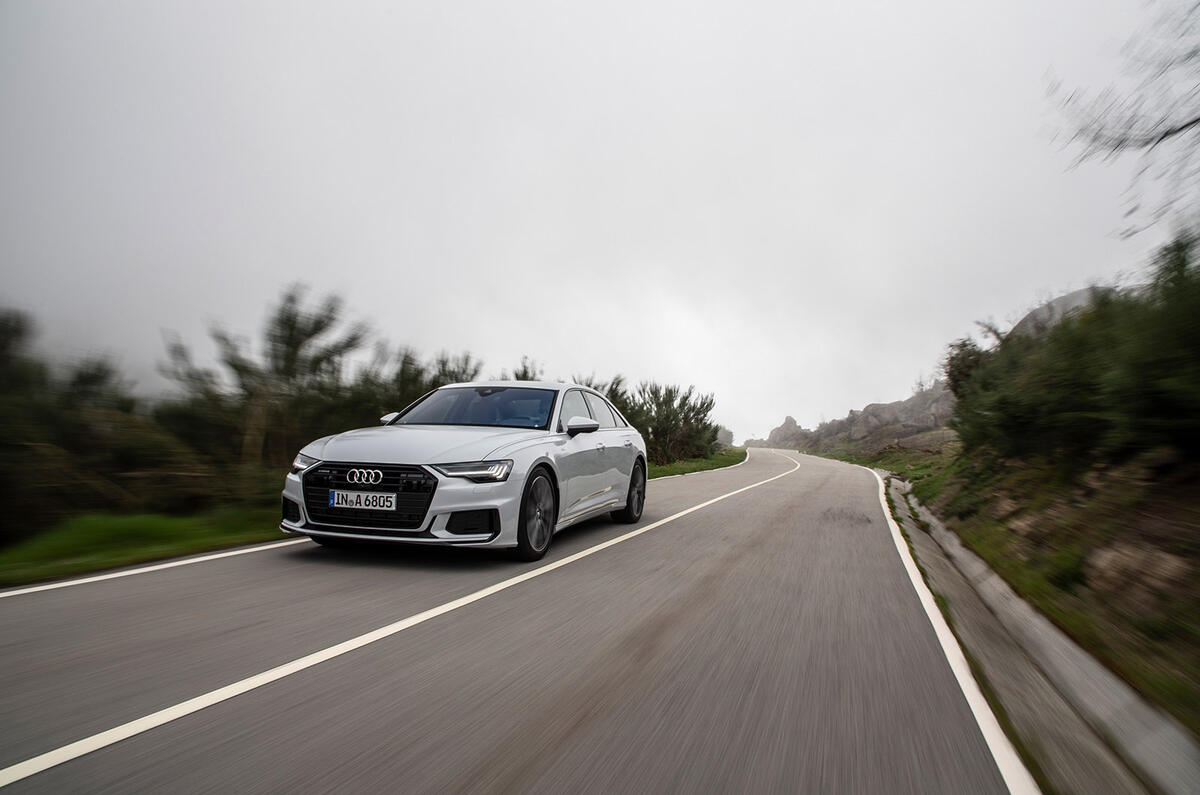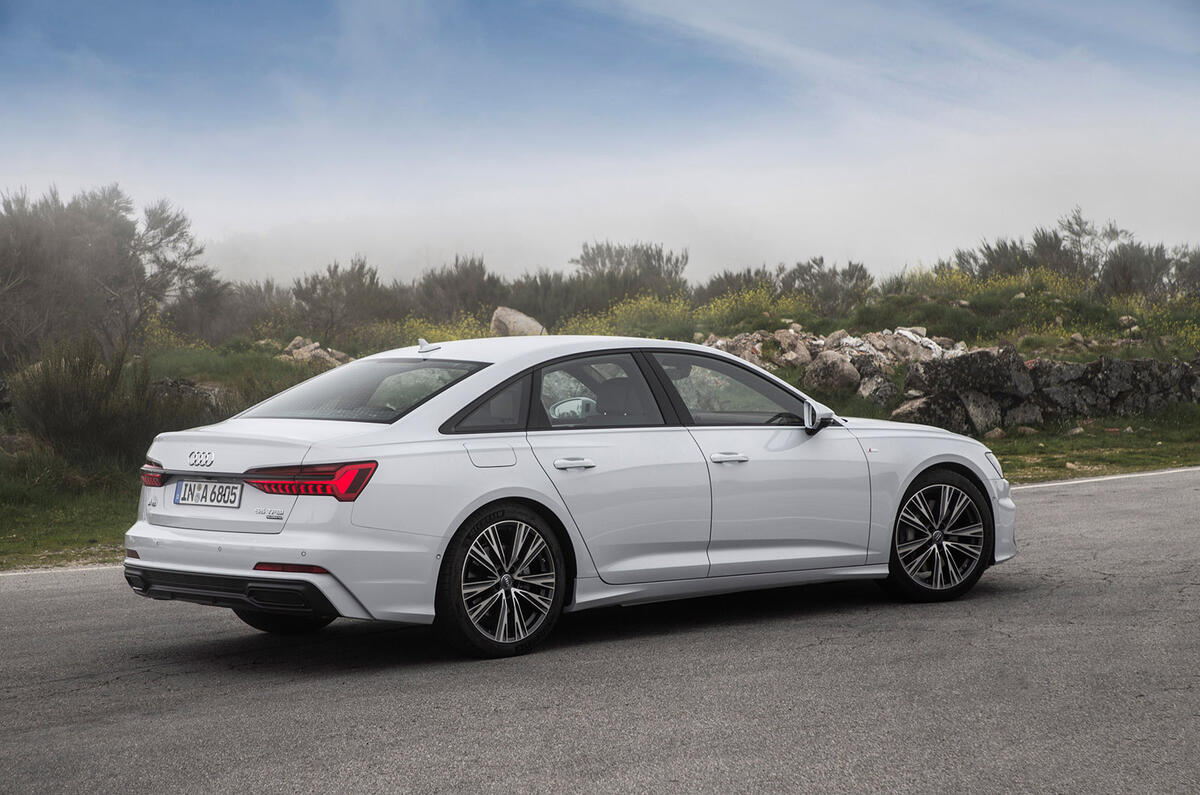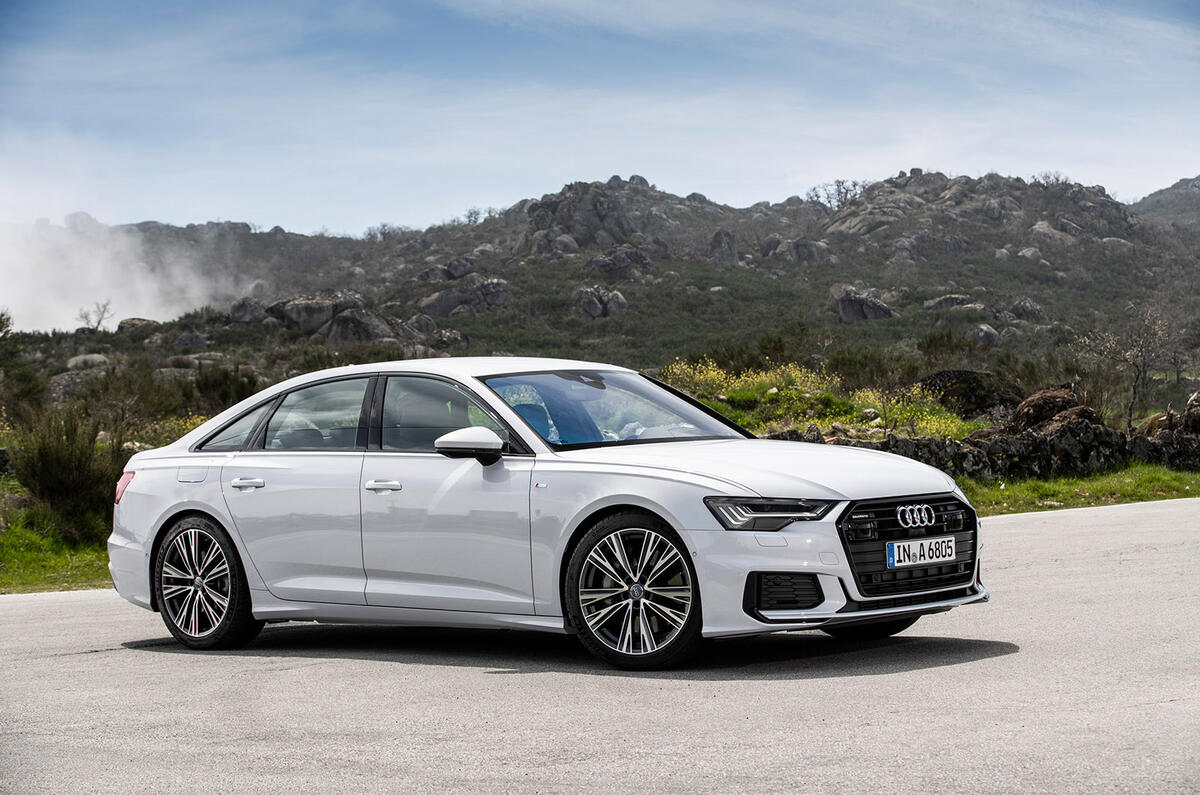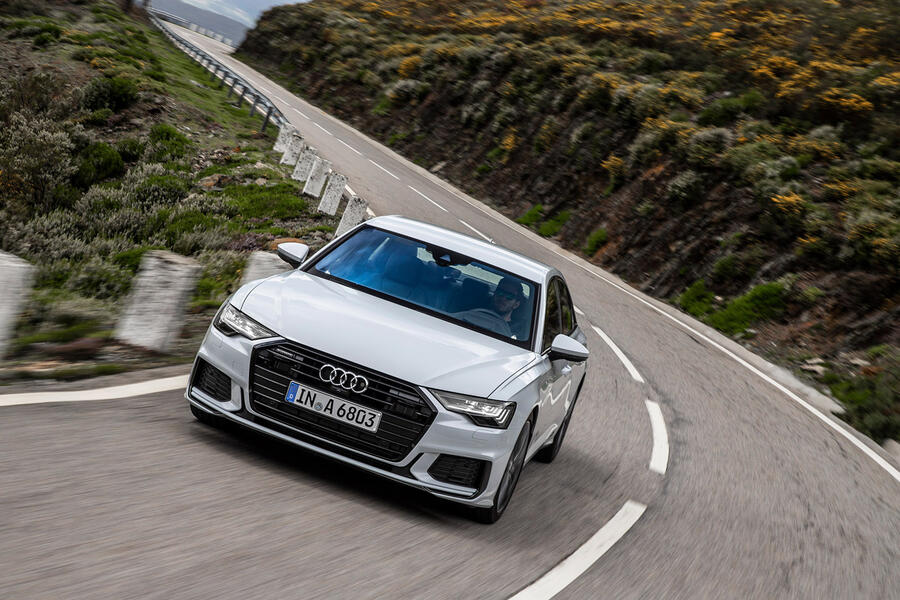You know what? Derivative it may be, but this car is quite handsome and, to these eyes, considerably more cohesive in the metal than either the A8 or even the A7.
The balance of hard and soft edges is well struck, and the body is nicely adorned with some chrome and the fancy optional HD Matrix LED headlights of our test car. New bone lines exaggerate (create from scratch, in truth) haunches above the wheel arches, and the overhangs are shorter – something that never seems to do any harm to a car’s appearance.
The optional, part-Alcantara sports seats are broad and set low. They’re almost as nice to sit in as they are to behold, and the perfectly singular thulk emitted as you swing shut the aluminium door could well be unmatched in all of automotive-dom. You might even open the door for a second time, just to close it again. The mechanism is a marvel.
Within, you’re met with Audi’s novel MMI digital architecture, which uses two touchscreens (8.6in for climate control and writing input below, 10.1in for everything else on top). This is where Audi aims to stand out from the crowd, and it looks mighty slick, even if all that glass does attract dust that readily catches any sunlight.
Is the initial effect of all the menus and lack of switchgear puzzling? Absolutely. Is it slick? Mostly, but there’s some latency between the haptic feedback from a command and the corresponding action.
With familiarity, you’d probably grow to love the MMI, although there will always be the argument that a second display for climate control is distracting overkill. Meanwhile, Audi’s digital instrument cluster, known as Virtual Cockpit, is as effective and visually appealing as ever.
On the move, the seven-speed S tronic ’box floats through its ratios in double time, to the extent that you can find yourself gliding along in top even in built-up areas. That’s great for fuel economy and refinement, but the delay between foot punching accelerator, the correct cog being selected and torque making its way to the road is such that the overtake you’d planned is usually ancient history. Better to the keep the powertrain in Dynamic and the chassis in Comfort – something you can do in Individual mode.
The petrol V6 is a suitably silver-tongued unit, however, and emits just a faint growl when prodded, overlaid with the even fainter whine of spooling turbos. A 0-62mph time of 5.1sec puts the performance it delivers just shy of the equivalent BMW 540i xDrive’s and therefore far from embarrassing. Both cars unleash peak torque comfortably below 2000rpm, too, so progress in the A6 is never anything less than effortless.
Combined fuel economy is rated at 42.1mpg, which betters the BMW and gives the Audi a theoretical range of just under 600 miles.
As for ride, the optional air suspension is difficult to fault on a macro level but can transmit a coarse road surface into the backs of your thighs with just a little too much clarity. The A6 nevertheless rides supremely well on smooth roads, but there’s just enough doubt in our minds to wait until we’ve had the car on British Tarmac before reaching any firm conclusions.
What’s beyond question is the benefits resulting from Audi’s work on aerodynamics, particularly in regard to the turbulence caused by the door mirrors. Close your eyes and you could quite easily confuse an A6 for the flagship A8 on the motorway. Wind noise is fantastically distant, and allows you to indulge your ears with a 1020-watt ‘3D’ Bang & Olufsen sound system.
But back to that steering, because this car is supposed to be the first A6 that’s a credible driver’s machine. Our example was equipped with Audi’s Dynamic All-Wheel Steering system, which should be optioned with consideration. By swivelling the rear wheels the opposite way to the fronts – and up to a segment-leading 5deg – at speeds below 37mph, it makes this sizeable car feel usefully agile and shaves almost a metre from the turning circle. City-centre activities undoubtedly feel less burdensome.
Questionable behaviour arises out on the open road, when the rears turn with the fronts to aid stability. No problem there. However, getting to that stage involves the front wheels momentarily decoupling from the steering column and turning a mite tighter into the corner independently. No other four-wheel steering system operates in this fashion, and while it’s undoubtedly effective, making the car feels unexpectedly agile, the process manifests as a fleeting but sudden quickening of the rack.
The standard rack uses a speed-sensitive variable ratio but feels far more intuitive, so the car is more easily placed, even if it does nothing to address the absence of feel at the helm (which, frankly, when you’re smooching along in such noble serenity, isn’t such a disagreeable trait).
Body control is generally first rate, although if you’re even just a fraction too greedy with your speed on corner entry, the A6 adopts a nose-heavy balance. It seems to possess an artificial rather than a natural dexterity. Plus ça change.
Lastly are the driver assistance features, of which there are 39 designed to make the A6 the go-to car for high-milers and fleet buyers. Lane-keeping assist is the most present, and it’s effective in isolation but probably more of a hindrance than a help if you’re attempting to make swift progress. It’s continually niggling the wheel as you scythe through corners. You can turn it off easily enough, but the problem is that Audi would lose half an NCAP star were it not to default to being active every time the car starts.
